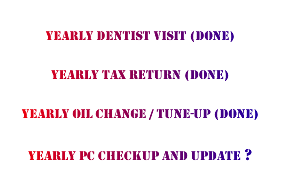|
|

Quick Navigation:

This web site is currently ranked #1 on page #1 on MSN.Com for
our top 10 keywords plus we are #1 to #10 on page #1 on about 20 other search
engines as well as Google.Com, and Yahoo.Com due to our SEO techniques!
We offer Web design with or without SEO.
What is SEO and what is Page Rank?
SEO stands for
Search Engine Optimization, and is the professional process of manipulating a
current web site or building one from scratch that is inherently user friendly
and also designed using various techniques to make the web site show up very
high in the results of a search engine query.
Various search engine spiders crawl the web and
index pages for users to help them find relevant results when they search for a
particular topic. SEO helps to achieve
thousands or hundreds of thousands of incoming links from good, solid,
informational, relative sites in 'high standing' to people as well as the
search engines to increase it's 'popularity' and at the same time increase
exposure to you're web site (which is great if you are a product seller or sell
customer services for profit).
Page Rank (PR) is
a Google based numeric value that represents how important a page is on the
web. Google figures that when one page links to another page, it is effectively
casting a vote for the other page. The more votes that are cast for a page, the
more important the page must be. Also, the importance of the page that is
casting the vote determines how important the vote itself is. Google calculates
a page's importance from the votes cast for it. How important each vote is is taken into account when a page's Page Rank is
calculated.
Page Rank is
Google's way of deciding a page's importance. It matters because it is one of
the factors that will determine a page's ranking in the search results. It
isn't the only factor that Google uses to rank pages, but it is a very
important one.
Typo Tutorial: Find out what misspelled keywords that you're website visitors are searching for.
Not all links are
counted by Google. For instance, they filter out links from known link farms.
Some links can cause a site to be "penalized" or more accurately
described as decrease a site value by Google. They accurately know that
webmasters can't control which sites link to their sites; but they can control
which sites they link out to. For this reason, links into a site cannot harm
the site, but links from a site can be harmful if they link to "penalized"
(devaluated) sites. So be careful which sites you link to. If a site has PR0,
it is usually devaluated, and it would be unwise to link to it.
How is Page Rank
calculated?
To calculate the
Page Rank for a page, all of its inbound links are taken into account. These
are links from within the site and links from outside the site.
PR(A) = (1-d) + d(PR(t1)/C(t1) + ... + PR(tn)/C(tn))
That's the
equation that calculates a page's Page Rank. It's the original one that was
published when Page Rank was being developed, and it is probable that Google
uses a new variation of it but they aren't telling us what it is. It doesn't
matter though, as this equation is accurate enough to derive a usable result.
In the equation
't1 - tn' are pages linking to page A, 'C' is the
number of outbound links that a page has and 'd' is a damping factor, usually
set to 0.85.
We can think of it
in a simpler way:
A page's Page Rank = 0.15 + 0.85 *
(a "share" of the Page Rank of every page that links to it)
"share" = the linking page's Page Rank divided by the
number of outbound links on the page.
A page
"votes" an amount of Page Rank onto each page that it links to. The
amount of Page Rank that it has to vote with is a little less than its own Page
Rank value (its own value * 0.85). This value is shared equally between all the
pages that it links to.
Keep in mind: every outgoing link on a page is designated with a value and the more outgoing links you have, the value for each link is diminished, as all of the outgoing links must "share" the total value available (each outgoing links value is reduced as the total number of links going out increases). Once you pass 50 or more outgoing links on any ONE page, each of the outgoing links value becomes essentially worthless unless you have an extreamly high page rank on that particular page. However most search engines will only go so far in indexing a highly dense outgoing or incoming link page. Also the lower the link is towards the bottom of the page, it recieves the least amount of point value or relevence.
Based on this, we could assume that
a link from a page with PR4 and 5 outbound links is
worth more than a link from a page with PR8 and 100 outbound links. The Page
Rank of a page that links to yours is important but the number of links on that
page is also important. The more links there are on a page, the less Page Rank
value your page will receive from it.
If the Page Rank
value differences between PR1, PR2,.....PR10 were equal then that conclusion
would hold up, but many people believe that the values between PR1 and PR10
(the maximum) are set on a logarithmic scale, and there is very good reason for
believing it. Nobody outside Google knows for sure one way or the other, but
the chances are high that the scale is logarithmic, or similar. If so, it means
that it takes a lot more additional Page Rank for a page to move up to the next
Page Rank level that it did to move up from the previous Page Rank level. The
result is that it reverses the previous conclusion, so that a link from a PR8
page that has lots of outbound links is worth more than a link from a PR4 page
that has only a few outbound links.
Whatever scale
Google uses, you can be sure of one thing. A link from another site increases
you're site's Page Rank. Just remember to avoid links from link farms.
Note that when a
page votes its Page Rank value to other pages, its own Page Rank is not reduced
by the value that it is voting. The page doing the voting doesn't give away its
Page Rank and end up with nothing. It isn't a transfer of Page Rank. It is
simply a vote according to the page's Page Rank value. It's like a shareholders
meeting where each shareholder votes according to the number of shares held,
but the shares themselves aren't given away. Even so, pages do lose some Page
Rank indirectly, as we'll see later.
How the
calculations are actually done?
For a page's
calculation, its existing Page Rank (if it has any) is abandoned completely and
a fresh calculation is done where the page relies solely on the Page Rank
"voted" for it by its current inbound links, which may have changed
since the last time the page's Page Rank was calculated.
The equation shows
clearly how a page's Page Rank is arrived at. But what isn't immediately
obvious is that it can't work if the calculation is done just once. Suppose we
have 2 pages, A and B, which link to each other, and
neither have any other links of any kind. This is what happens:-
Step 1: Calculate page A's Page Rank
from the value of its inbound links
Page A now has a new Page Rank
value. The calculation used the value of the inbound link from page B. But page
B has an inbound link (from page A) and its new Page Rank value hasn't been
worked out yet, so page A's new Page Rank value is based on inaccurate data and
can't be accurate.
Step 2: Calculate page B's Page Rank
from the value of its inbound links
Page B now has a new Page Rank
value, but it can't be accurate because the calculation used the new Page Rank
value of the inbound link from page A, which is
inaccurate.
It's a Catch 22 situation. We can't
work out A's Page Rank until we know B's Page Rank, and we can't work out B's
Page Rank until we know A's Page Rank.
Now that both pages have newly
calculated Page Rank values, can't we just run the calculations again to arrive
at accurate values? No. We can run the calculations again using the new values
and the results will be more accurate, but we will always be using inaccurate
values for the calculations, so the results will always be inaccurate.
The problem is
overcome by repeating the calculations many times. Each time produces slightly
more accurate values. In fact, total accuracy can never be achieved because the
calculations are always based on inaccurate values. 40 to 50 iterations are
sufficient to reach a point where any further iteration wouldn't produce enough
of a change to the values to matter. This is precisely what Google does at each
update, and it's the reason why the updates take so long.
One thing to bear in mind is that the results we get from the calculations are proportions. The figures must then be set against a scale (only known to Google) to arrive at each page's actual Page Rank. Even so, we can use the calculations to channel the Page Rank within a site around its pages so that certain pages receive a higher proportion of it than others.







